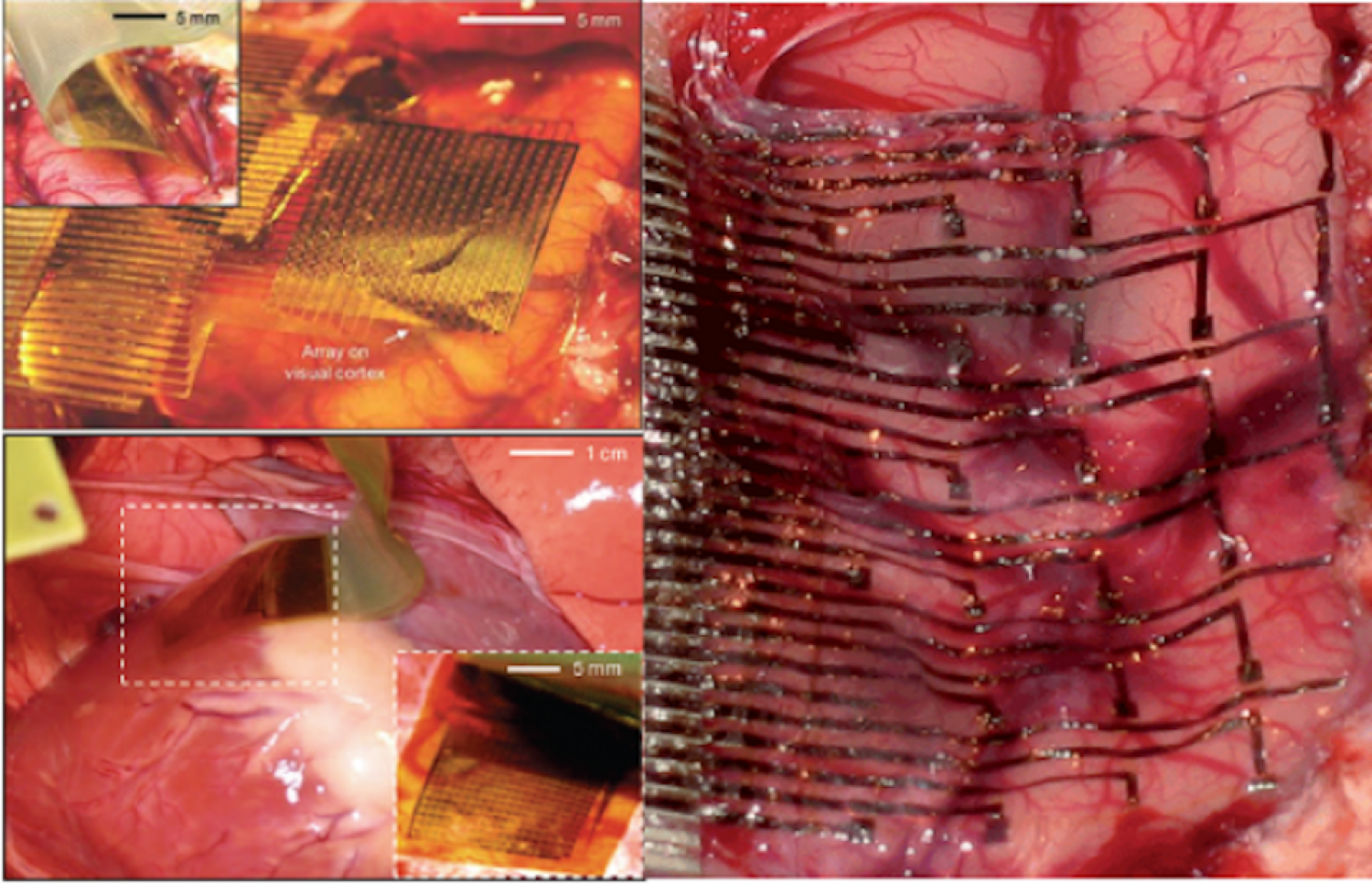In biomedical practices, many electronic devices are used to perform diagnosis, treament and other functions. However, electronics are usually very hard, and cannot comply with the complex geometries and extreme deformabilities of biological tissues. This incompatibility greatly limits the application of electronics in biomedical areas (one extreme example is
brain computer interface). We developed electronics that are capable of intimate, non-invasive integration with the soft, curvilinear surfaces of biological tissues, which offer important opportunities for diagnosing and treating disease and for improving interfaces between electronics and biological tissues. As shown on the left are neural sensors on cat's brains (top left and right) and cardiac sensor on pig's heart, for electrophysiology measurement.
References:
Viventi et al., Flexible, Foldable, Actively Multiplexed, High-Density Electrode Array for Mapping Brain Activity in vivo, Nature Neuroscience 14, 1599–1605 (2011)
Kim et al., Dissolvable Films of Silk Fibroin for Ultrathin Conformal Bio-Integrated Electronics, Nature Materials 9, 511-517 (2010) (featured on the cover of Neural Sensors)
Viventi et al., A Conformal, Bio-interfaced Class of Silicon Electronics for Mapping Cardiac Electrophysiology, Science Translational Medicine 2, 24ra22 (2010). (featured on the cover of Science Translational Medicine)


